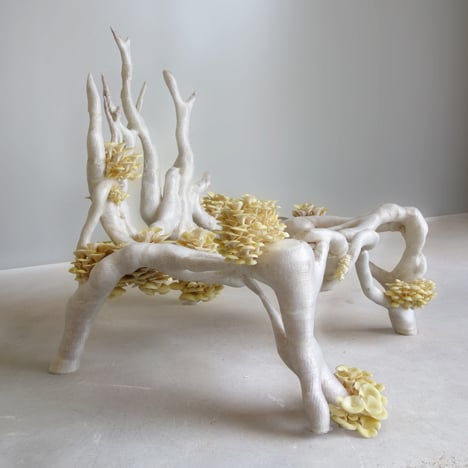
Penn State has been really good at making strides towards a cleaner Earth, involving methods of both sustainability and recycling. Plastic is a major material that partakes in this need for sustainability, and is a major contender that needs to be changed soon. Plastic hardly decomposes and destroys entire ecosystems. Luckily, scientists are starting to develop a use for fungus, and that use can replace plastic (organically, too!).
Scientists at Utrecht University in the Netherlands have been developing such a replacement for plastic over the past few years. They describe the fungus material as being made up of many filaments. These filaments grow from a core and from some distance they start branching out. Consequently, they grow into a network of filaments. If you would let the fungus grow into a wood pulp, it would decompose the wood while at the same time gluing what is left of the pulp together. This result is called a composite. The name of the fungus most commonly used by these scientists is called mycelium; a material that is light, strong, fire-resistant, and water repellent. The mycelium culture is transferred to a plate, allowing it to grow and spread. Once you want the growing to stop, you must cook the object. Cooking creates an entirely new material for the culture. Depending on how you want to develop the culture, copious amounts of materials can be produced from this single culture; ranging from leathery to plastic to cork-like.
If production with new materials continues, the world won’t be the same anymore. Materials will be reusable and disposable. Everything will be produced differently. I believe more things in the future will be grown into new materials, more than we can imagine.
“Though plastic is useful in many different facets where it’s not meant to break down, packaging is ultimately meant to be thrown away. Creating packaging and other plastic materials along those lines with fungus would put us on the right path to a more eco-friendly future.” –Ada Carr, Weather.com
.jpg)

Wow, this is really something exciting! I have done many reports on plastic pollution for classes before, and realize how detrimental it really is to our planet. The 5 Gyres Foundation says that, “We currently recover only 5-10% of the plastics we produce,” which is absurd when you think about how much plastic individuals throw away every day. I’m very excited to see if this material can really feasibly be integrated into the products we consume every day. Thanks for writing about it!